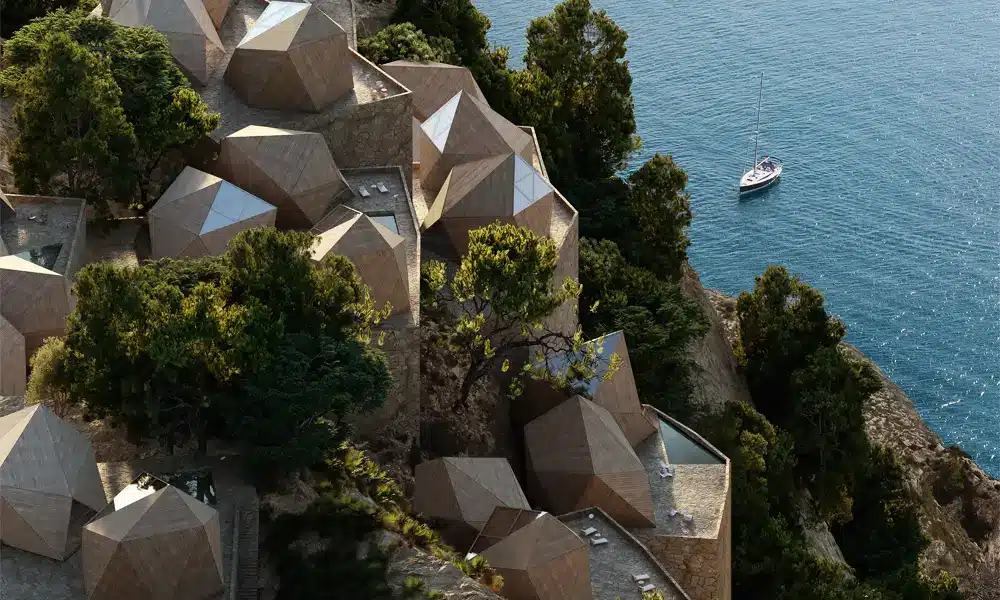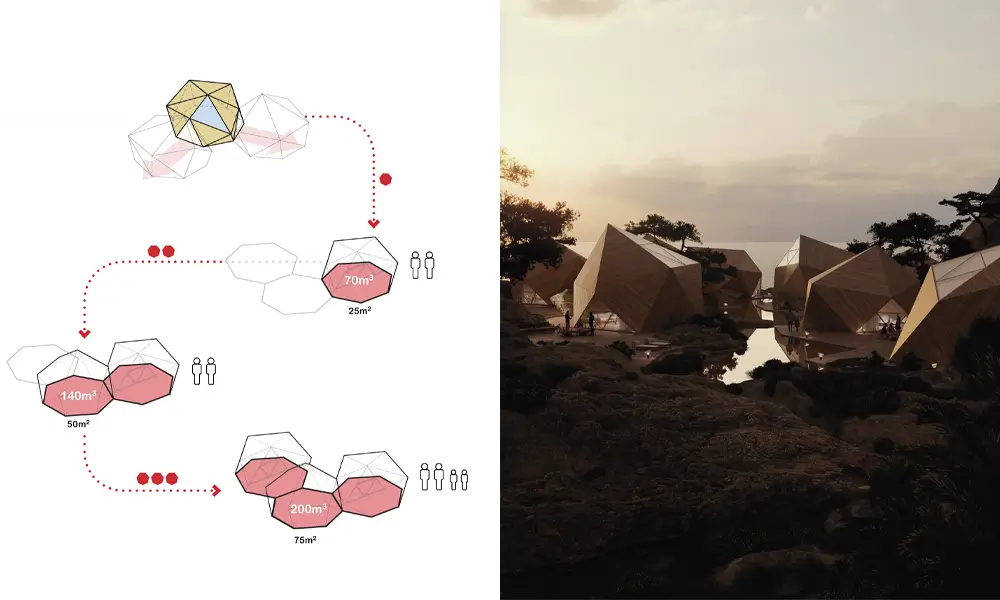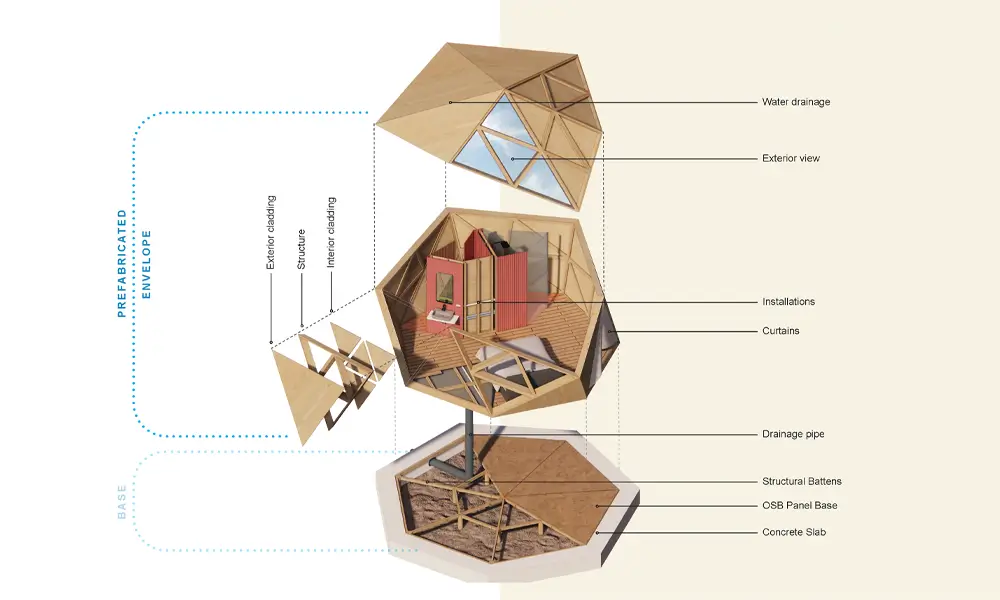Redefining Nature Tourism with Eco Cabins
SOG design, in collaboration with Emohtik, presents a study of volumetric prototypes for implementation in various locations closely connected to nature.
Emohtik has been developing modular prefabricated constructions in Southeast Asia for years.
We did a modular project study of prefabricated cabins made from Cross Laminated Timber (CLT). The objective of this project is to create modules that can be installed in diverse locations, from the majestic European Pyrenees to the beautiful Mediterranean coasts and the captivating islands of Southeast Asia like Bantayan Island in the Philippines.
Evolution of Nature Tourism
The evolution of nature tourism has seen a significant shift towards sustainable practices, particularly in the realm of architectural design. As travellers increasingly seek immersive experiences in lush rainforests and pristine natural environments, the demand for accommodations that harmonise with nature has grown.
Eco Destination: a project in Cambodia that meets the rising demand for ecotourism
Modular construction offers a flexible and efficient way to build eco-friendly lodgings that minimise their environmental footprint. Using prefabricated materials helps developers reduce waste and energy use in construction. These structures can blend into their surroundings, allowing tourists to appreciate nature and honour cultural heritage without causing harm.
Sustainable tourism not only focuses on preserving natural habitats but also emphasises responsible architectural design that respects local ecosystems. This approach helps nature tourism grow in a way that supports conservation, improves the visitor experience, and protects the environment for future generations.
Versatility of Modular Design
Modular design in architecture has gained significant attention for its versatility and efficiency. At the core of this approach is the concept of 3D modules, which are prefabricated sections that can be easily transported and assembled on-site.
This method streamlines the construction process by utilising industrialised and assembled volumes, which provide exceptional flexibility and adaptability to various programmatic needs and geographic locations.
A key aspect of modular buildings is the connections between modules, allowing for unique layouts and configurations to meet specific needs. This modularity enables easy expansion or reconfiguration without extensive renovations.
Repetition and proliferation
Modularity can also be used for residential, commercial, or mixed-use purposes while maintaining a cohesive aesthetic. This adaptability makes modular construction an attractive option for affordable housing and even large-scale commercial developments.
This innovative approach goes beyond usual orthogonality and established ideas of modular construction, resulting in a unique architectural masterpiece.
Eco Cabins Using Cross Laminated Timber
This project prominently features Cross-Laminated Timber (CLT).
CLT is made by glueing together layers of timber at right angles, making it easier to create large enclosures and walls. This construction method provides excellent structural strength and dimensional stability, allowing for expansive designs.
- Strength and Structure: CLT’s large-format panels simplify the creation of open spaces and complex designs while reducing support needs.
- Thermal Efficiency: With superior thermal insulation, CLT outperforms traditional materials like concrete and steel, enhancing energy efficiency.
- Sustainability: As a renewable resource, CLT generates minimal waste and acts as a carbon sink, reducing the project’s environmental impact.
- Acoustic and Fire Performance: CLT offers excellent acoustic insulation and fire resistance, maintaining structural integrity during fires.
- Aesthetic Appeal: The natural warmth of timber gives CLT structures visual charm and versatility in design.
Module details of eco cabins
Ease of Mobility and Transportation in Modular Construction Projects
Mobility is essential in nature tourism, and these cabins are designed with this need in mind.
The ease of mobility and transportation in modular construction projects represents a significant advancement over traditional construction methods.
Modular construction entails fabricating building components off-site, which are then transported to the project location for assembly. This method helps lower transportation costs and minimizes delays typical of traditional construction, where materials must be sourced from various locations.
Additionally, this approach ensures better quality control and reduces waste by manufacturing components in controlled environments. Once finished, the modules can be quickly delivered directly to the site, speeding up the construction process and helping save costs throughout the project lifecycle.

In this study’s context of eco cabins, the CLT sheets can be cut into pieces that will then be transported by road in containers or low-platform trucks, facilitating their installation in a variety of geographic locations.
This project signifies a major advancement in nature and adventure tourism. It showcases a delicate balance in architecture that offers an elegant accommodation solution within exceptional natural landscapes.




